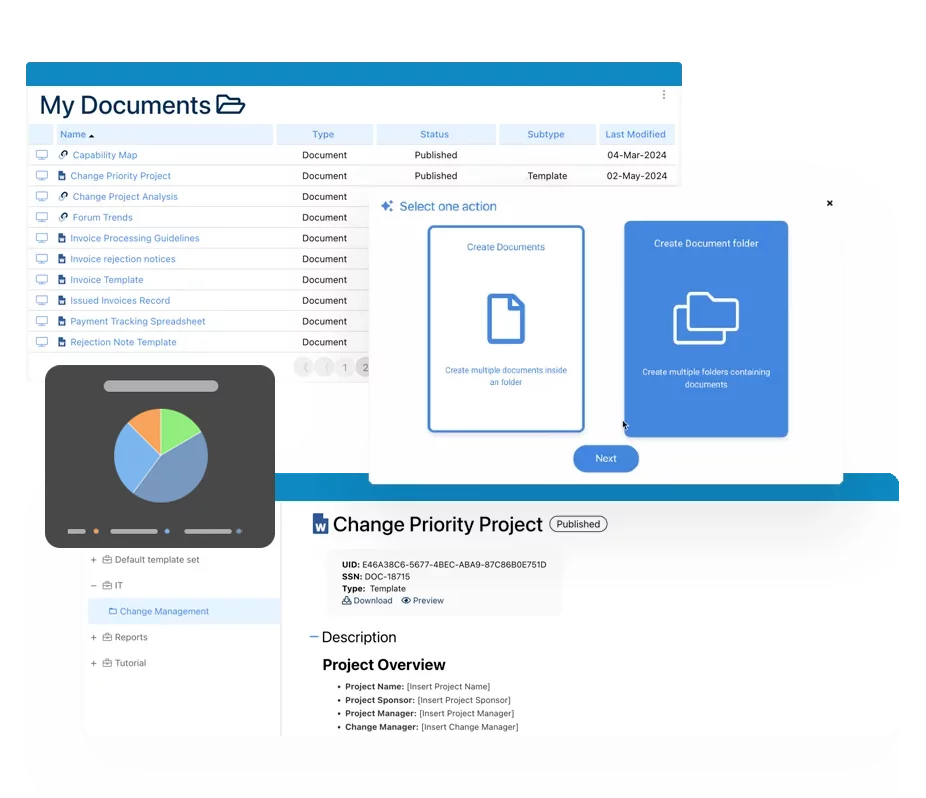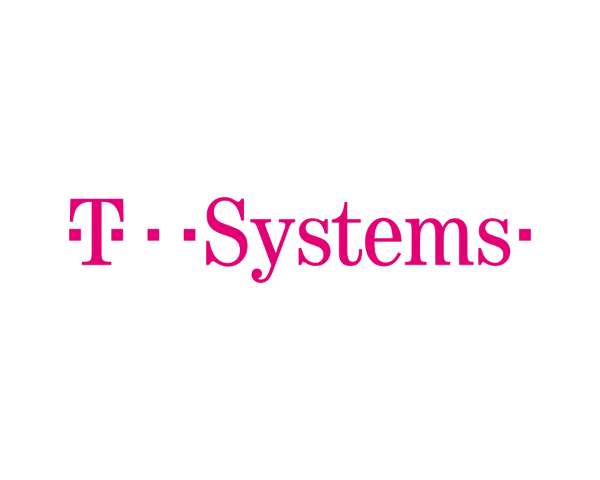- Business Process Management (BPM)Document Management System (DMS)Electronic Quality Management System (QMS)Risk, Governance & Compliance (GRC)Low Code Rapid Application Development (LC)Business Continuity Management (BCM)Enterprise Architecture (EA)Business Process Management (BPM)Document Management System (DMS)
- Document Control Overview
- AI Content Creation & Improvement
- Policy & Procedure Management (SOP)
- AI Content Mining Parser
- Collaboration & Governance
- Data Migration & Integration
- Interfacing Offline App
 Electronic Quality Management System (QMS)
Electronic Quality Management System (QMS)- Quality Management System Overview
- Document Control & Records Management
- Audit & Accreditation Management
- Corrective & Preventative Action
- Quality Event (Non-conformity / Complaint/ Compliance)
- Risk Management
- Incident Management
- Environmental Health & Safety
- Product & Supplier Management (SCAR)
- Training Management
- Control Management
- Action Items Management
- Management Review
- FMEA
- Pharmacovigilance
- Data Migration & Integration
 Risk, Governance & Compliance (GRC)
Risk, Governance & Compliance (GRC)- Risk, Governance & Compliance Overview
- Risk & Control Management
- Regulatory Compliance
- Collaboration & Governance
- Data Migration & Integration
- Interfacing Offline App
 Low Code Rapid Application Development (LC)
Low Code Rapid Application Development (LC)- Low Code Automation Platform Overview
- Electronic Web Form Design (eFORMS)
- Database Table Entity Designer
- System Integration Designer
- Design & Manage Tasks
- Design & Manage BPMS Apps
- Custom Rules/Guards/Actions
- Electronic Services
- User Homepage
- BAM (Business Activity Monitoring)
- Custom Dashboard Design
- Data Migration & Integration
 Business Continuity Management (BCM)
Business Continuity Management (BCM)- Business Continuity Management Overview
- Business Impact Analysis
- Disaster Recovery Simulation
- Action Item Management
- Mass Notification Management
- Asset Management
- Interfacing Offline App
 Enterprise Architecture (EA)
Enterprise Architecture (EA) - IndustriesRegulatory ComplianceUse CasesLearning CenterFramework & PracticesIndustries
- Healthcare
- Medical Device Technology
- Life Science, Pharmaceutical
- Aerospace & Defense
- Airlines and Aviation
- Media & Telecommunications
- Government and Military
- Technology
- Energy
- Logistics & Port Operations
- Banking & Capital Markets
- Retail & Consumer
- Consulting
- Education
- Engineering & Construction
- Manufacturing
- Financial Services
- Insurance
- Chemicals
Regulatory Compliance- Regulatory Compliance
- ISO
- ISO 9001 (guide)
- ISO 9001:2026 (preparation)
- ISO 17025
- ISO 27000
- ISO 27001
- ISO27002
- ISO 42001
- EU AI Act
- SOC 2 Type 1 & 2
- Sarbanes Oxley
- GxP
- GRC
- Basel
- Digital Signature
- GDPR
- IFRS
- NIST SP 800-53
 Use Cases
Use Cases- Quality Management System (QMS)
- Digital Transformation
- Continuous Improvement
- Governance, Risk & Compliance
- Knowledge Management
- System Deployment (ERP, CRM…)
 Learning CenterFramework & Practices
Learning CenterFramework & Practices - AboutCustomer SuccessPartners



Collaboration & Governance
Please Select contact form.
Interfacing empowers your organization with efficient governance through process-based solutions for quality, performance, and business process governance.

Business Process Governance & Business Process Collaboration
Business Process Governance ensures that processes are designed, executed, and changed in a controlled, compliant, and auditable manner. It provides the structure needed to align business operations, cross-functional collaboration, and decision-making with policies, regulations, and organizational objectives.
Interfacing’s Business Process Governance capabilities enable organizations to define ownership, support structured collaboration, enforce controls, manage change, and maintain traceability across processes, supporting regulatory compliance and operational accountability within an Integrated Management System (IMS).


Employees are notified of newly published versions, need to confirm they read and understand changes, and have a user-friendly forum to raise improvement requests or discuss issues as they arise. Empowering employees with tools to collaborate is of great importance for success; and as much so is enforcing ongoing accountability and governance.
EPC simplifies this need with automated control measures such as review and approval cycles and draft vs. published version read/ write and delete security access rights on all content. Additionally the EPC platform tracks and stores all historical details of a modification, from request through to implementation, including all specifics of a change for detailed audit reporting.
Discover the
The EPC Toolkit provides organization with:
Communication and Notifications for Governed Collaboration
Enable governed communication around processes, policies, and operational content through discussion threads, targeted notifications, and structured feedback. Teams can raise questions, propose improvements, and route actions to accountable owners without losing traceability.
This supports collaboration at scale while maintaining visibility into what changed, who was notified, and what actions were taken, which helps with audit readiness and ongoing process improvement.


Microsoft Teams Collaboration with Process Context
Bring collaboration into the flow of work by connecting process discussions and notifications with Microsoft Teams. Stakeholders can review updates, respond to questions, and participate in approvals without switching tools.
This improves responsiveness while keeping collaboration structured and traceable across governed process content.


Multi-User Collaboration with Controlled Updates
Support parallel contributions without duplicating work or overwriting content. Multi-user collaboration enables teams to develop and improve governed process content while maintaining consistency, accountability, and a single source of truth.
Subscriptions and automated updates help keep the right stakeholders informed as processes evolve.




Assign Ownership and Accountability Across Processes
Define who owns each process and who is accountable for reviews, approvals, and updates. Clear ownership supports governance by ensuring responsibilities are explicit, visible, and consistently applied.
Recurring notifications, subscriptions, and read confirmations help ensure the right people act on changes and acknowledge updates, supporting compliance and audit readiness.


Manage the Full Change Lifecycle from Request to Publish
Control how process changes move from improvement requests to review, approval, and publication. A structured change lifecycle reduces inconsistency and helps teams prevent unmanaged updates in regulated or high-risk workflows.
Support serial or parallel approvals, task assignment, and confirmation steps to ensure updates are implemented correctly and communicated to impacted teams.



Version Control and Audit Trails for Process Governance
Maintain a complete history of changes with controlled versioning, comparisons, and approval records. Versioning and audit trails support traceability by documenting what changed, when it changed, and who approved it.
This helps organizations demonstrate governance controls during audits and inspections, especially in compliance-driven environments.


Role-Based Security Access for Governed Content
Protect governed content with role-based access controls and permissions for read, write, delete, and approval actions. Security access management ensures only authorized users can modify or approve controlled process content.
Authentication, user grouping, and security inheritance help scale governance across teams and sites while supporting consistent access policies.



Internationalization for Global Process Standardization
Support global process governance by managing localization and alignment across regions, languages, and standards. Internationalization helps teams maintain consistent execution while adapting content to local requirements where needed.
This is especially useful for organizations operating across multiple jurisdictions, sites, or regulatory contexts.



Adoption and Usage Analytics for Governance Outcomes
Measure engagement and adoption with usage analytics that show how teams interact with governed content. Track activity, behaviors, and event patterns to identify where adoption is strong, where training may be needed, and where compliance risks may emerge.
Analytics help governance leaders validate that controlled updates are being used, acknowledged, and followed across the organization.



Generate a Process Map in a Few Clicks
Discover the power of our feature as it effortlessly generates detailed end-to-end process map.
What do we mean by “end-to-end”? The A.I. takes care of automatically creating processes that include:
- Flow objects
- Materials
- Annotations
- Assigned responsible roles
- Flow Object Descriptions
This streamlined process ensures a comprehensive representation of your workflow, saving you time and effort.

Elevate Your Operations: Bridging Gaps, Enhancing Efficiency
Immerse your organization in the transformative capabilities of our AI system. It delves deep into your existing processes, unveiling previously unnoticed gaps, inefficiencies, and errors.
With the power of AI, your documentation takes on a dynamic life, consistently evolving and adapting to the ever-changing business landscape. It’s not just documentation; it’s a living entity that grows with your business.

Quick and Tailored Content on Demand
Imagine effortlessly obtaining fresh, tailor-made documentation to meet your specific needs, infused with your unique best practices, operating systems, and country-specific requirements.
Organizations can automate the creation of:
- Step-by-step guides
- Rule and System descriptions
- Policies
- Documentation templates
Step into a new standard in documentation creation, where customization converges with automation.

Elevate Your Documentation: AI’s Seamless Upgrade from Outdated Content
Explore the incredible capability of our AI to smartly enhance your outdated content, creating a strong foundation for fresh and improved documentation.
Our AI ensures you don’t need to reinvest when making the move from the old to the new, saving time and resources without compromising quality.

Precision Automation for Regulatory Compliance
Extend the capabilities of Interfacing’s AI system beyond process creation to ensure precision automation in regulatory compliance, risk management, and control libraries.
Automatically identify regional and industry-specific compliance needs, create comprehensive risk registries for assessment, and generate dynamic control libraries for enhanced governance.
With precision and automation, our AI system paves the way for a robust and resilient business environment.

Empowering Proactive Risk Management
Unlock the power of Interfacing’s AI system as a proactive shield for risks and controls. In a world where manual procedures often lead to non-compliance risks, our AI acts as a shield against such issues.
By proactively advising users of potential compliance conflicts, it ensures your processes adhere to regulatory standards.
The AI not only digitizes activities, eliminating redundancies but also becomes a guiding force in risk management and control libraries.
Why Choose Interfacing?
With over two decades of AI, Quality, Process, and Compliance software expertise, Interfacing continues to be a leader in the industry. To-date, it has served over 500+ world-class enterprises and management consulting firms from all industries and sectors. We continue to provide digital, cloud & AI solutions that enable organizations to enhance, control and streamline their processes while easing the burden of regulatory compliance and quality management programs.
To explore further or discuss how Interfacing can assist your organization, please complete the form below.

Documentation: Driving Transformation, Governance and Control
• Gain real-time, comprehensive insights into your operations.
• Improve governance, efficiency, and compliance.
• Ensure seamless alignment with regulatory standards.

eQMS: Automating Quality & Compliance Workflows & Reporting
• Simplify quality management with automated workflows and monitoring.
• Streamline CAPA, supplier audits, training and related workflows.
• Turn documentation into actionable insights for Quality 4.0

Low-Code Rapid Application Development: Accelerating Digital Transformation
• Build custom, scalable applications swiftly
• Reducing development time and cost
• Adapt faster and stay agile in the face of
evolving customer and business needs.
AI to Transform your Business!
The AI-powered tools are designed to streamline operations, enhance compliance, and drive sustainable growth. Check out how AI can:
• Respond to employee inquiries
• Transform videos into processes
• Assess regulatory impact & process improvements
• Generate forms, processes, risks, regulations, KPIs & more
• Parse regulatory standards into requirements

Request Free Demo
Document, analyze, improve, digitize and monitor your business processes, risks, regulatory requirements and performance indicators within Interfacing’s Digital Twin integrated management system the Enterprise Process Center®!
Trusted by Customers Worldwide!
More than 400+ world-class enterprises and management consulting firms



































































